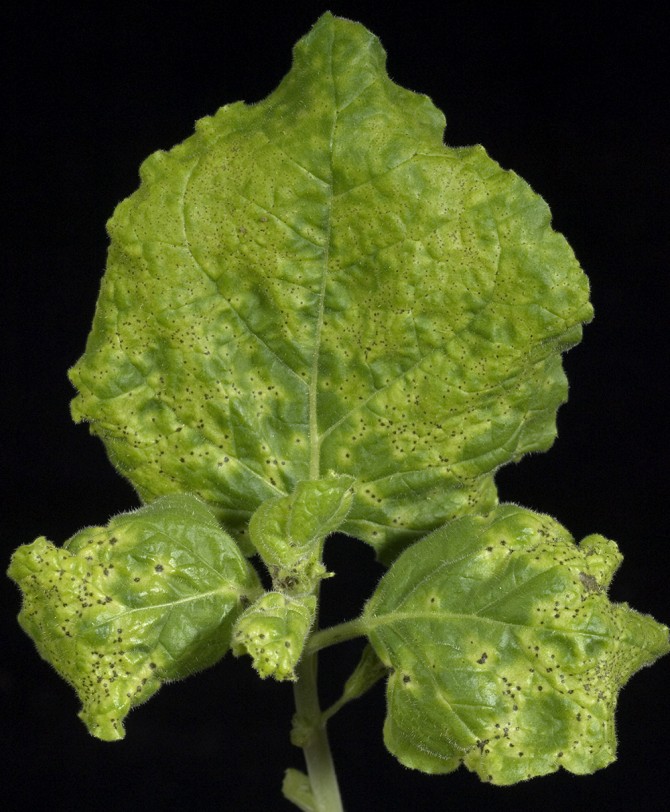Study reveals how pathogen proteins team up to defeat plants
By Krishna Ramanujan
Many of the plant pathogens that threaten crops around the world use a common strategy to beat plant defenses: they inject protein saboteurs into plant cells to defeat the host’s immune system.
These effector proteins function as a team to break down a plant’s immunity, but until now it’s been unclear how this complex system works. Trying to understand how individual effector proteins work together has been “like watching a soccer game in a fog,” said Alan Collmer, Ph.D. ’81, professor of plant Pathology and plant-microbe biology. “You can’t see how the individual players are working as a team, all you know is whether a goal was scored or not,” the goal being whether the plant becomes diseased or not, he said.
Collmer is senior author of a study published May 8 in the journal Cell Reports that describes a new experimental system for studying effector interplay and uncovering how effectors cooperatively sabotage a plant’s defenses. Hai-Lei Wei, a former research associate in Collmer’s lab and currently a professor at the Chinese Academy of Agricultural Sciences in Beijing, is the paper’s lead author. Wei Zhang, a research associate in Collmer’s lab, is a co-author.
The results yield insights into vulnerabilities of plant defenses that can be exploited by a variety of bacterial, fungal and oomycete (fungus-like) pathogens. The study design also provides a model that could be similarly used to uncover how effector proteins in human pathogens work as a team to disable human immune systems and cause disease.
The experimental system is based on an engineered strain of the pathogen Pseudomonas syringae, developed by Collmer and colleagues, and the plant, Nicotiana benthamiana, a wild tobacco widely used in research. The P. syringae strain used (called DC3000) was originally isolated from tomato plants with bacterial speck disease, which is a common problem for tomato growers in New York state and around the world.
DC3000 deploys 29 effector proteins; however the engineered version of DC3000 lacks all effector proteins, which allows researchers to add effectors one at a time or in pairs and small sets to determine their actions in inducing and suppressing a plant’s immune responses. By starting with a blank slate and introducing effectors in a controlled way, the researchers gained insights into how effectors work together to defeat the plant’s internal anti-effector surveillance system.
This internal surveillance system, which is based on plant resistance genes, is particularly important in breeding disease resistance in many crops, but unfortunately pathogens often defeat this resistance by evolving variant strains with a few different “players” in their effector “teams.” In this study, it was discovered that six of the 29 DC3000 effector proteins trigger defense responses associated with detection by the plant's immune system. But several of the remaining 23 effectors work in tandem with the detected effectors to suppress this plant’s immune response, thus enabling pathogen success.
The National Science Foundation’s Plant Genome Research Program has funded since 2000 a multi-institutional project, co-led by Collmer and Gregory Martin, the Boyce Schulze Downey Professor at the Boyce Thompson Institute, to study P. syringae interactions with tomato and its experimental surrogate N. benthamiana. The new effector interplay study system culminates the development of DC3000 as a widely-used probe for studying the plant immune system and the battle with effector-armed pathogens. Importantly, the project has also revealed a treasure trove of natural resistance in diverse types of tomato that can be used in breeding new, natural, and durable disease resistance in tomato.
Media Contact
Get Cornell news delivered right to your inbox.
Subscribe

